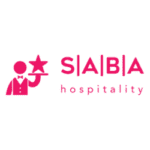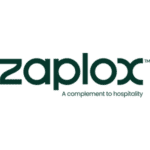 The way people live, work, and travel has changed. Remote and hybrid work models mean that companies are increasingly prioritising face-to-face team gatherings, conferences, and industry events—rather than traditional office interactions—to bring colleagues and clients together, driving sustained demand for group accommodations.
The way people live, work, and travel has changed. Remote and hybrid work models mean that companies are increasingly prioritising face-to-face team gatherings, conferences, and industry events—rather than traditional office interactions—to bring colleagues and clients together, driving sustained demand for group accommodations.
According to CoStar Group, revenue per available room for group travel was up 6.8% during the first eight months of 2024 compared to the same period in 2023. This shift underscores the importance of thoughtfully managing group demand alongside transient business to achieve the optimal mix—one that capitalises on these emerging opportunities while still leveraging the flexibility, spontaneity, and rate advantages that transient bookings can deliver. The key for hoteliers lies not in choosing one segment over the other, but in crafting a balanced approach aligned with their market, goals, and operational strengths.
The case for transient bookings
Transient bookings, which cater to individual travellers, are a cornerstone of hotel revenue. These bookings often command higher average daily rates (ADR) compared to group bookings. With transient guests, hotels can dynamically adjust pricing based on demand patterns, market trends, and competitor rates. This flexibility allows for real-time optimisation, making transient bookings a particularly valuable segment revenue source during peak demand periods or special events when transient guests can substantially boost the Average Daily Rate (ADR).
Transient bookings also generally occur in shorter booking windows. Individual travellers tend to make reservations closer to their stay dates, enabling hotels to fill gaps in occupancy and maximise revenue on short notice. This adaptability is particularly beneficial in unpredictable market conditions or during periods of fluctuating demand. Operationally, transient bookings are also simpler to manage. Unlike group bookings, they do not require extensive coordination for events or catering, allowing staff to focus on delivering personalised experiences.
The strength of group bookings
While transient bookings shine in their flexibility and revenue potential, but they generally have higher cancellation and no-show rates compared to group bookings. Group bookings bring stability and predictability, often involving contracts with upfront commitments, providing a secure revenue base. This stability is especially valuable during low-demand periods, like weekdays for resorts, when transient bookings alone may not be sufficient to maintain occupancy levels.
Groups typically book well in advance, giving hotels greater visibility into future demand. This foresight enables more effective budgeting, staffing, and resource allocation. And with a solid group base, revenue managers can confidently adopt a more aggressive approach to transient pricing.
Group bookings also often include ancillary revenue opportunities such as catering, meeting space rentals, and audiovisual services, making them a lucrative option for properties equipped to handle such demands.
Balancing act: the challenges
Despite their strengths, both group and transient bookings come with challenges. Group bookings, for example, often involve discounted rates negotiated well in advance, which may limit a hotel’s ability to capitalise on last-minute high-demand periods. Additionally, the unpredictability of cancellations or attrition is magnified with group business as the hotel can be left with large blocks of empty rooms it cannot easily sell. The sting of this may be eased somewhat by contractual stipulations, but the challenge of quickly selling a newly released glut of room inventory remains.
Another critical consideration in taking large group bookings is how they influence stay-through business and the shoulder nights around the group’s arrival and departure. When a sizable portion of the hotel’s inventory is blocked by a group—say 80 out of 100 rooms for a midweek conference—there’s limited space left for guests who might stay multiple nights before and after the event. For example, the few remaining rooms can be dedicated to longer-staying travellers, but the bulk must be sold as one-night stays on the “shoulder” dates. This dynamic can reduce opportunities to build a healthy length of stay pattern that fills quieter nights and optimises total revenue.
Transient bookings, on the other hand, carry a higher cost of acquisition and servicing, particularly when they are heavily reliant on online travel agencies (OTAs). Transient bookings alone may also not provide the volume required to fill a large property consistently, particularly during slower seasons.
The most significant challenge for hoteliers is deciding when to prioritise one type of booking over the other. Declining a group in anticipation of high transient demand can backfire if the anticipated demand does not materialise. However, accepting a group at discounted rates may displace higher-rated transient business, impacting overall profitability.
Finding the right mix
The optimal mix of group and transient bookings varies widely based on a property’s market position, size, location, and target audience. For urban hotels, transient bookings may make up a larger portion of bookings due to the steady flow of business and leisure travellers. Meanwhile, resorts and large conference hotels often rely heavily on groups to secure their revenue base.
Revenue management systems (RMS) play a crucial role in navigating these complexities. An advanced RMS, like IDeaS G3 RMS, allows hoteliers to evaluate which group booking prospects are most profitable while understanding the impact an opportunity has on demand patterns, before making a strategic commitment. These systems provide data-driven insights, enabling more confident decision-making and better alignment with the hotel’s long-term objectives.
Hotels must also account for seasonal variations, day-of-week patterns, and market events when crafting their strategy. For instance, a property might prioritise group bookings during weekdays to fill blocks of rooms while leveraging transient demand for weekends and peak travel periods. This approach ensures a steady revenue stream while maintaining flexibility to capture high-value transient opportunities.
Data-driven decision-making
Ultimately, the decision to prioritise group or transient bookings should be grounded in data. By analysing historical booking patterns, market trends, and revenue performance metrics, hotels can identify the strategies that yield the highest profitability. Key metrics such as total revenue per available room (TRevPAR), gross operating profit per available room (GOPPAR), and revenue per attendee can provide valuable insights into the performance of each segment.
Hotels also need to foster collaboration across departments—sales, revenue management, and operations—to achieve a balanced strategy and optimise revenue across all booking types. Clear communication and shared goals ensure that group and transient strategies complement rather than compete with one another, driving overall profitability.
Maximise profitability across all booking types
Assessing the merits of group versus transient bookings is not about determining which is “better” but understanding how to leverage each to its full potential. Transient bookings offer flexibility, high ADR, and ancillary revenue opportunities, while group bookings provide stability, efficiency, and long-term revenue visibility. By embracing a balanced, data-driven approach and leveraging technology to inform decision-making, hotels can maximise their profitability across all booking types now and into the future.




















